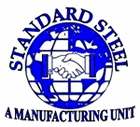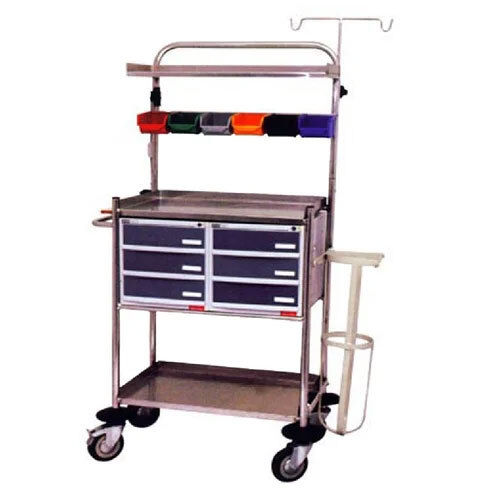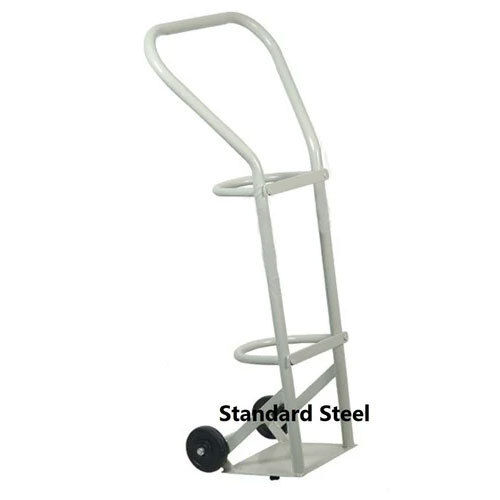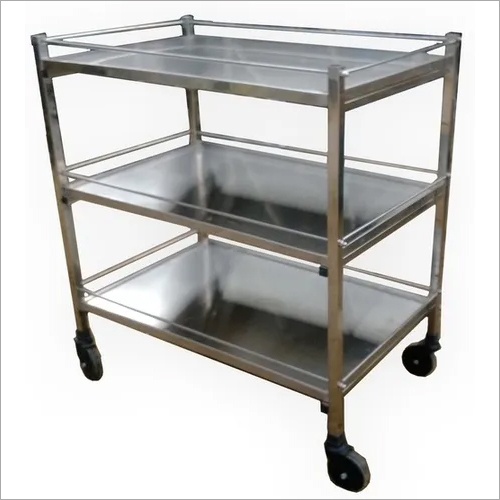Crash Cart Trolley
Crash Cart Trolley Specification
- Dimension (L*W*H)
- 24130 x 12700 x 38989 Millimeter (mm)
- Design
- Frame
- Height
- 38989 Millimeter (mm)
- Specific Usage
- hospital furniture
- General Use
- Commercial Furniture
- Regional Style
- Indian Style
- Furniture Type
- Hospital Cart
- Metals Type
- Steel
- Folded
- No
- Size
- 930
- Weight
- 30 Kilograms (kg)
Crash Cart Trolley Trade Information
- Minimum Order Quantity
- 01 Piece
- FOB Port
- india
- Supply Ability
- 100 Pieces Per Month
- Delivery Time
- 10 Days
- Sample Available
- Yes
- Sample Policy
- Sample costs shipping and taxes has to be paid by the buyer
- Packaging Details
- standard packing
- Main Export Market(s)
- Australia, Eastern Europe, Middle East, Africa, Western Europe, Central America, South America, Asia
- Main Domestic Market
- All India
- Certifications
- iso ce
About Crash Cart Trolley
Available in 950 x 500 x 1535 inch dimension, this Crash Cart Trolley is basically hospital furniture used for storage of medical equipments and documents. It has total six drawers used for storing medicines and paper based medical documents. Aluminum or alloy steel made two rectangular shelves can be used for storing medicine containers and other necessary instruments. It also has IV stand and oxygen cylinder storage space. Castor wheels of this Crash Cart Trolley are meant for its trouble free relocation purpose. Space saving design, Indian style, superior surface finish and high strength are the key aspects of this furniture.
Crash Cart Trolley
- Strong Stainless Steel tubular frame work.
- Six colour removable bins.
- Two Polystyrene storage units with three drawers each.
- Two drawers are With centre locking provision.
- Mounted on12.5cm swivel castors, two with Breaking.
- Provision of Powder coated Oxygen Cylinder Holder & SS IV rod.
- Provision of push Handles on either sides.
- Stainless steel sheet shelves.
- Overall approx size : 940mmL x 500mmW x 1535mmH.
| Product Type | hospital furniture |
| Size | 1530 |
| Color | white |
| Brand | standard steel |
| No. Of Wheels | 4 |
| I deal in | New Only |
| No. Of Drawers | 6 |
| Frame Type | stainless steel tubular |
| Holder Type | cylinder cage |
| Wheel Diameter | 100 mm |
| Weight | 15 |
| Warranty | 1 |
| Material | Stainless Steel |
| Capacity | 6 drawer |
| Wheel | 4 |
| Place Of Origin | india |
| Surface Finishing | ss |
Exceptional Design for Hospital Efficiency
Engineered for emergency use, the Crash Cart Trolley boasts a steel frame and a solid, non-foldable structure. Its generous size and thoughtfully arranged storage compartments ensure that medical staff can quickly access essential supplies during critical situations. Indian-style design elements allow it to seamlessly blend into healthcare facilities across the region.
Robust and Reliable Construction
With a weight of 30 kilograms and made from high-quality steel, this crash cart is designed for repeated, long-term use in demanding hospital settings. Its stability minimizes the risk of tipping, even when stocked with essential medical equipment, guaranteeing dependable performance.
FAQs of Crash Cart Trolley:
Q: How is the Crash Cart Trolley typically used in hospitals?
A: The Crash Cart Trolley is primarily used to store and transport emergency medical supplies quickly to the point of care, especially during critical situations such as cardiac arrests or trauma. Its spacious compartments facilitate organized access to medications and life-saving equipment.Q: What materials are used in the construction of the Crash Cart Trolley?
A: This trolley is made from durable steel, which provides robustness and ensures long-lasting use, making it ideal for the rigorous demands of commercial hospital environments.Q: When should a hospital consider upgrading to this crash cart model?
A: Hospitals should consider upgrading to this crash cart model when seeking a reliable, spacious, and well-organized solution for emergency response. Its sturdy steel construction and functional design make it an excellent choice during renovations or when expanding emergency capabilities.Q: Where can the Crash Cart Trolley be purchased or supplied in India?
A: This crash cart is available for purchase from distributors, manufacturers, exporters, suppliers, traders, and wholesalers throughout India, ensuring wide accessibility for healthcare facilities nationwide.Q: What is the process for ordering the Crash Cart Trolley?
A: Hospitals and medical suppliers can place orders through authorised distributors, exporters, or manufacturers. The process typically involves selecting size and quantity, confirming specifications, and arranging delivery to the healthcare facility.Q: What are the main benefits of using this crash cart in a hospital setting?
A: Key benefits include its sturdy and stable design, generous storage capacity, and ease of maneuverability. This ensures medical teams have immediate access to emergency supplies, improving response times and patient outcomes.

Price:
- 50
- 100
- 200
- 250
- 500
- 1000+
More Products in Hospital Trolley Category
Emergency Medicine Crash cart Trolley
Price 13000.0 INR
Minimum Order Quantity : 2
Furniture Type : Hospital Trolley
Metals Type : Steel
Specific Usage : crash cart trolley
Hospital Oxygen Cylinder Trolley
Price 1000.0 INR
Minimum Order Quantity : 1 Unit
Furniture Type : Hospital Trolley
Feature : oxygen cylinder trolley
3 Shelve Instrument Trolley
Price 4500.00 INR / Piece
Minimum Order Quantity : 01 Piece
Metals Type : Steel
Specific Usage : hospital
Feature : Other
Surgical instrument Trolley 3 shelf
Price 6000.0 INR
Minimum Order Quantity : 1 Pieces
Furniture Type : Hospital Trolley








 Send Inquiry
Send Inquiry Send SMS
Send SMS English
English Spanish
Spanish French
French German
German Italian
Italian Chinese (Simplified)
Chinese (Simplified) Japanese
Japanese Korean
Korean Arabic
Arabic Portuguese
Portuguese